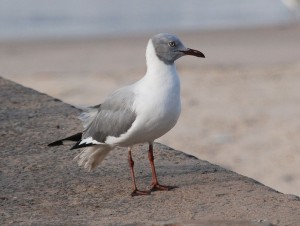 Few things are more simple and pleasurable in life than heading outside and watching all the beautiful birds fly to and from your bird feeder. Sometimes you see your favorite Northern Cardinal, a pesky House Sparrow, a brilliant Eastern Bluebird or a… hmm I’ve never seen one of those before.
Few things are more simple and pleasurable in life than heading outside and watching all the beautiful birds fly to and from your bird feeder. Sometimes you see your favorite Northern Cardinal, a pesky House Sparrow, a brilliant Eastern Bluebird or a… hmm I’ve never seen one of those before.
Sometimes these mystery birds are simply local birds you couldn’t identify or leucistic yet common birds, but there are times when those birds you see are rare and notable. Here’s what you should do when this happens.
Properly identify the bird
Before getting extremely excited and immediately calling all your birding buddies, it’s essential to correctly and unmistakably identify the bird. Take detailed notes of its plumage colors, size, beak shape, eye color and any other helpful traits you think could identify the bird. The best way to help you identify it is to take a few clear pictures of the bird. That way you could also get second opinions from friends and experts to make sure you’re not just misidentifying it.
Identify what type of sighting it is
Although spotting a bird that’s not typically seen could be classified as rare, there are actually a few ways to identify what type of sighting you’ve had that will help determine what to do next.
Rare bird sighting – This is the sighting of a bird that is in its own habitat, but is extremely rare. For example, the species might be endangered or just really hard to find in its natural habitat. This could even be something like unexpectedly seeing a California Condor.
Vagrant bird sighting – This is the sighting of a bird that’s not necessarily rare, but is found in a habitat or location not typical for the bird. The reason this could be notable is that it gives birders the opportunity to cross off a bird they might otherwise never see because they can’t travel to its native habitat. An example of this was when a Gray-hooded Gull made an appearance at Coney Island even though its native to Africa and South America.
There are also other possible sightings including exotic birds that escaped from the captivity or hybrid birds. However, birders tend to not be as interested in these other types of sightings because they usually aren’t counted as official sightings.
Report it
Once you’ve figured out for sure what type of bird it is, you should report it. Although there’s no rule or obligation saying you have to report the sighting of a rare bird, it’s a great service to all the other birders who are looking to see the bird in person. To report it, you could notify a local birding group, Rare Bird Alert, a nearby Audubon chapter and even eBird. When you report the bird, you should be prepared to give a detailed description of where you saw it as well as a picture and physical description.
According to the Cornell Lab of Ornithology, it’s likely you’ll be questioned a lot, but you should not be offended:
It is essential for official records to be accurate, and the overall feeling is that it’s best to leave out some legitimate sightings that aren’t well-enough documented than to include some inaccurate ones. Virtually every birder has had at least one sighting rejected by a state organization.
Nevertheless, remember to keep an eye out for any unusual sightings at your feeder because you never know when that rare bird is going to stop by.



2 Comments
Thanks for sharing!
This is a helpful post. In order to attract more birds in your area, you should acquire a bird feeder, which is a device that holds the bird foods. Depending upon its placement and the type of bird food that you provide, you will definitely draw the attention of the birds. Who knows? You might attract a rare bird in the long run of your bird feeding experience.